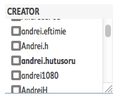MozTrap is what's called a "test case management system". Basically, software QA people need a structure and pattern to their testing. What to test, what versions to test on and what hardware/operatting system etc all is part of a "test suite". That's what MozTrap manages.
So this project was built by Mozilla's automation and tools team. It is currently not an actively developed project. Not because it's not needed or used but because it basically maps all the features we need. A large part of the code base was originally written by a personal friend of mine who I respect wholeheartedly; Carl Meyer of Django/pip/virtualenv/etc fame. I'm grateful for the awesome documentation he left behind amongst many other things.
Together with the team we sat down and listed all the biggest pain points as of today. Basically, the number one thing is speed. Pages load too slowly. Normally when web developers worry themselves with web performance it's a matter of shaving milliseconds off a page where a clients perception equals lost or gained profits. Here's not a problem of milliseconds but a problem of seconds. After some quick poking around on the production site and looking at some code the conclusion is simple: The site is so darn slow because the HTML sent from the server is way too MASSIVE. And baked into that is a mixture of the poor web server having to produce a massive HTML blob and it being sent over the wire.
One test run I made said it took 14 seconds to render a certain page.
Why is it so slow?
So how did this happen and why is it not Carl's fault? :) The reason it happened was because of the underestimated number of options added to the advanced filtering drop-downs. On a local dev version you never notice these things because you set up some options, for example tags, and the drop-down never gets larger than 10-20 options. For example, the "Creator" drop-down today has 1,664 different choices.
If you take all those choices and turn thing into a HTML like this: <option value="1">Adam</option>\n<option value="2">Bram</option>... etc. you get 66Kb of just HTML. However, MozTrap doesn't work like that. Instead it uses pretty drop-downs that don't look like regular HTML drop-downs. See for yourself; go to https://moztrap.mozilla.org/results/runs/ and click the "Advanced Filtering" button.
So, that means that the HTML for each option instead looks like this:
<li class="filter-item">
<input name="filter-creator" data-name="creator" value="1" id="id-filter-creator-1" class="check" type="checkbox">
<span class="onoff">
<label for="id-filter-creator-1" class="onoffswitch">Adam</label>
<span class="pinswitch"></span>
<span class="content" title="creator: Adam">Adam</span>
</span>
</li>
Now you get 620Kb of just HTML just for the "Creators" field. Granted, that is the biggest field of all the drop-downs but lots of them are massive.
So, this makes the page weigh a total of about 1.1Mb just for the HTML. Not only is it a lot of work for the (Django) server to generate this but it's also a heck of a lot of data to send across the Internet on every page request.
So what was the solution?
An ideal solution would have been a significant re-write whereby much of the values of the page gets rewritten as later AJAX calls. I.e. load a skeleton that loads superfast, and then load some AJAX in the background. That AJAX could potentially be cached in the browser with localStorage or something so that you get something to show very quickly whilst you wait for the AJAX request to complete. But this would have been too big a change and the way the filtering works on these pages, you actually need all the options in the drop-downs on immediate load because of the way "pinned filters" work.
So the solution was to replace all the repeated HTML chunks with 1 JSON string and then a piece of Javascript template rendering. So, in the Django template code instead of:
{% for field in filters %}
{% include "lists/_filter_group.html" with advanced=1 prefix="filter" pinable=1 %}
{% endfor %}
We now replace this with:
<script>
var FILTERS = {% filterset_to_json filters with advanced=1 prefix="filter" pinable=1 %}
</script>
<script id="filter_group" type="text/html">What that basically is is some Mustache code that I use to generate the HTML DOM nodes and insert into the page after load.
In conclusion
So basically nothing changes. Nothing of the Django view had to change. Visually there's no difference and the same actual user data is sent from the server to the client but just packed in a more optimal way.
There are multiple pages where these massive "Advanced Filtering" options exist but on one page I measured the whole page went from weighing 1.1Mb down to 132Kb.

Comments
Did you also consider using gzip/deflate which could shrink the data even more?
Actually already using that. My optimization was on the HTML before gzip so in all fairness the transmission size difference is actually smaller.
In case your json-data/html doesn't change that often, you could also think about using ETAGs so data which doesn't change don't needs to be transmitted at all.